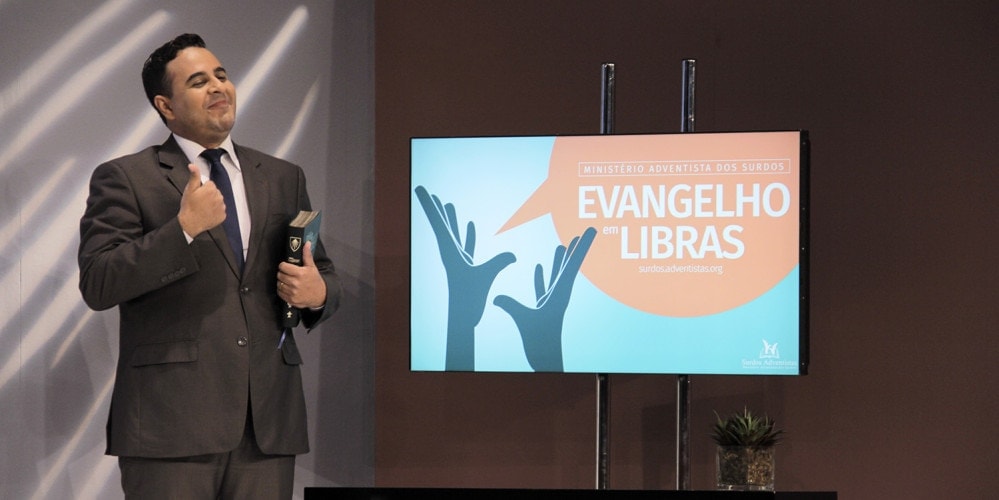
, South American Division
All eyes focused on computers, tablets, and smartphones as thousands of deaf people across Brazil watched a special Seventh-day Adventist evangelistic series live-streamed on Facebook and YouTube.
The number of viewers soared to 31,489 for the second annual “Evangelibras” (Evangelism in Sign Language) event, which aims to both share the gospel message and undergird the Adventist Church’s commitment toward the deaf community, organizers said. Last year 3,239 people watched the program, which was only aired on YouTube.
Adventist pastor Douglas Silva, who is deaf, led the series from the headquarters of the church’s South American Division in Brasilia and answered videotaped questions submitted by viewers in Brazilian sign language, known as Libras.
After the series, more than 200 people requested Bible studies.
This is only the beginning, said Edison Choque, coordinator of “Evangelibras” and director of special needs ministries for the South American Division, which covers eight countries.
"Five years ago we had 49 meeting points for Adventist deaf members and today we have 170, but it is still not enough,” Choque said. “Our challenge is for every big city and every region to train new interpreters and multiply this dream.”
The Adventist Church has about 1,400 members who are deaf in Brazil.
Watch the “Evangelibras” (Evangelism in Sign Language) event
Choque said the challenge now is to provide “Evangelibras” viewers with the requested Bible studies. Viewers have been directed to local Adventist congregations with members who specialize in working with the deaf.
Jackeline Mennon, who has advised Choque on his work with the deaf community for the past eight years, emphasized the importance of producing resources and placing them in the hands of the deaf.
“They feel valued because someone, in this case the Seventh-day Adventist Church, is concerned about teaching them in their mother tongue,” Mennon said.
She said deaf people from other faiths are studying the Adult Sabbath School Bible Study Guide and other Adventist materials in sign language because of a lack of such resources in Brazil.
“Although we are walking timidly down this road, we already have more resources aimed at the deaf than many other denominations who have worked with deaf people for longer periods of time," she said.
Orleans Ribeiro, who is deaf and leads the church’s deaf ministry in Brazil’s capital, Brasilia, and the surrounding region, said he was thrilled with the growing amount of deaf resources released by the church.
“People are excited to learn about the content we share,” he said. “And later they want to know where they can find a Seventh-day Adventist Church. Today we have DVDs, some books, many things online, and this helps us pass the gospel from person to person across Brazil.
Silva, who led the “Evangelibras” series from June 15 to 18, dreams about sharing the Adventist message with the more than 9 million people who are deaf in Brazil. For that to happen more quickly, he said, more deaf people need to attend the seminary and become pastors.
“It is important for you — if you are deaf, reading this article, and interested — to study theology so we can reach out to more people,” he said through a sign-language interpreter.